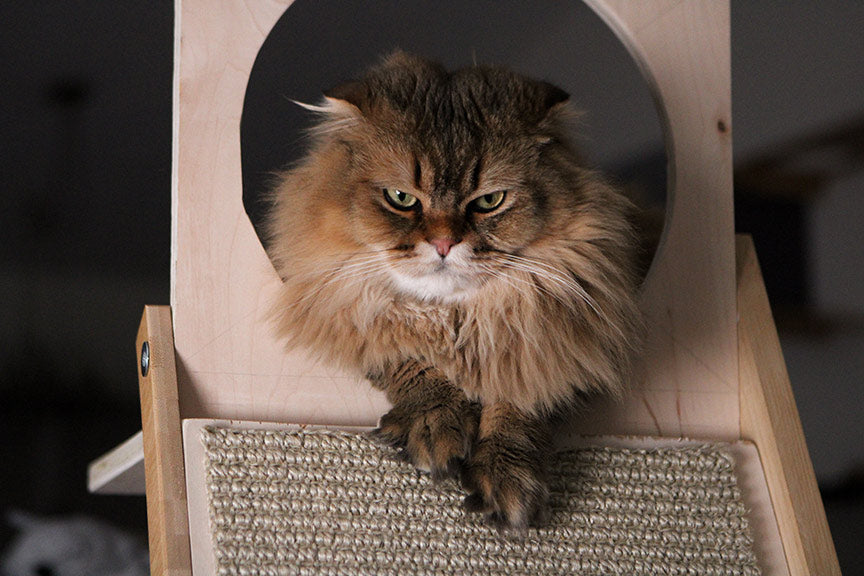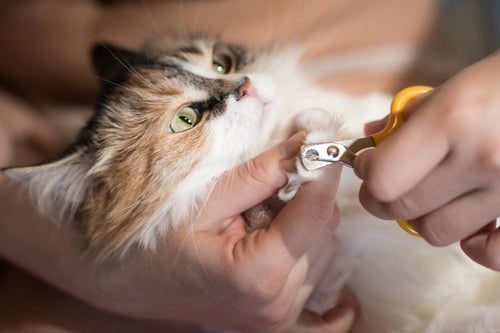Anyone who has shared a home with a cat has witnessed something not fully appreciated by science until recently: the facial expressions of cats. Cats are capable of forming strong bonds and relationships with people, as well as other cats. This strong tendency to be social has served cats well in their history, and as with many social species, sharing one's emotional state is important when it comes to keeping the peace.
Unfortunately, many people are not picking up much of what feline facial expressions are telling us. The good news is that it seems the more time you spend with cats, the better you are at reading them. The thing is, we only just started listening to cats.

Cats can perceive emotional states in both people and other cats. Depending on if the person or cat is happy or aggressive, cats make choices about whether to stay away or approach. They are able to use information about the emotional state of another to adjust their own behavior to best suit the situation.
OFFERING FRIENDSHIP
Even if many of us miss the subtle cat facial expressions, we are all able to use some cat communication, such as slow blinking. This blink appears to have a pro-social purpose. A slow-blinking person was associated with cats approaching that person in a friendly manner. This slow blink seems to promote social interaction, an important tool for building relationships and maintaining bonds.

CONFLICT AND AGGRESSION
Conflict is another area where cats use facial expressions to communicate. These offensive and defensive communications are shown in moments of high stress. An offensive cat might have a direct hard stare, ears upright and rotated forward, and constricted pupils. These signal a cat who is confident and moving into the conflict.
The other side of the spectrum is a less confident cat. An unsure cat will show defensive behavior in a conflict such as dilated pupils, ears flat and sideways, and moving slightly away from the threat. This communication helps reduce actual physical fighting, although when signaling fails a fight can follow.

PAIN FACIAL EXPRESSION
Feline facial expression in response to pain can drastically improve veterinary treatment of pain in cats. Looking at a cat's face can help indicate if your cat is in pain. A cat who is feeling good will have relaxed open eyes, ears facing forward, relaxed muzzle, and loose and curved whiskers. Pain in a cat is shown by squinty eyes, ears flat and rotated outward, muzzle tension, and whiskers staring and pushed forward.


Overall, there is still so much to learn about cats. Our felines are signaling subtly-thought facial expressions every moment they are with us, and the more we observe the more we see. The rich emotional lives that cats lead can be shared.
By watching them more closely you can improve how you read those inner states, and that can have a positive impact on cat welfare and improve rescue work, vetting, and of course the human-cat bond.
Further Research
People and cats gazing at each other https://www.ncbi.nlm.nih.gov/pmc/articles/PMC7775363/
https://www.sciencealert.com/cats-do-have-facial-expressions-you-re-just-bad-at-reading-them
https://www.sciencedirect.com/science/article/abs/pii/S0376635708002209
https://journals.sagepub.com/doi/full/10.1177/1098612X18771205
https://link.springer.com/article/10.1007/s10071-020-01348-5
https://www.mdpi.com/2076-2615/10/7/1107/htm
https://www.sciencedirect.com/science/article/pii/S0376635716302947
https://www.nature.com/articles/s41598-019-46330-5















